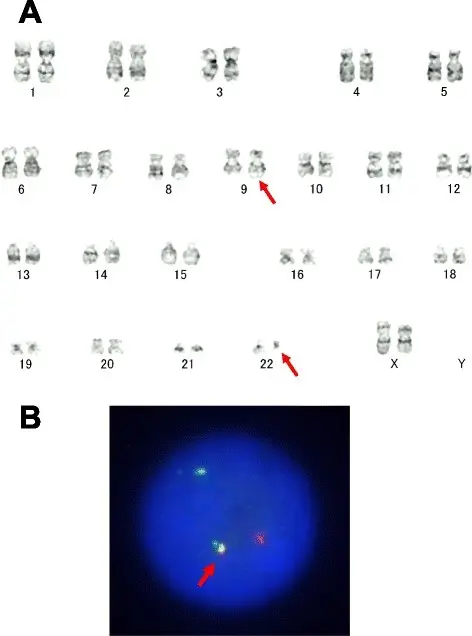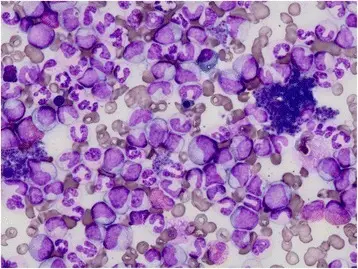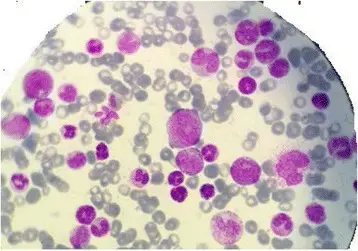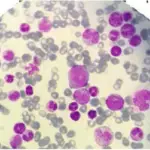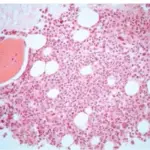Chronic myelogenous leukemia is a myeloproliferative disorder characterized by increased proliferation of granulocytic cell line and determined to have the Philadelphia chromosome/translocation t(9;22)(q34;q11.2).
What is the Pathology of Chronic Myelogenous Leukemia?
The pathology of chronic myelogenous leukemia is:
-Etiology: The cause of chronic myelogenous leukemia is a rearrangement (translocation) of genetic material between chromosome 9 and chromosome 22 creating an abnormal fusion gene called BCR-ABL1.
-Genes involved: BCR- ABL1 gene; Philadelphia chromosome translocation.
-Pathogenesis: The sequence of events that lead to chronic myelogenous leukemia occurs when a pluripotent stem cell undergoes malignant transformation and clonal proliferation, leading to a striking overproduction of mature and immature granulocytes.
-Histology: The histology associated with chronic myelogenous leukemia shows an increased number of granulocytes and their immature precursors, including occasional blast cells.
How does Chronic Myelogenous Leukemia Present?
Patients with chronic myelogenous leukemia typically affects both sexes with a slight male predominance and present at age range of 54 to 64 years (median age at diagnosis). The symptoms, features, and clinical findings associated with chronic myelogenous leukemia include weakness, fatigue, weight loss, fever, bone pain and enlarged spleen.
How is Chronic Myelogenous Leukemia Diagnosed?
Chronic myelogenous leukemia is diagnosed by elevated granulocyte count on complete blood count and bone marrow aspiration/biopsy that shows the Philadelphia chromosome in cytogenetic or molecular studies such as fluorescent in situ hybridization (FISH) and reverse transcription polymerase chain reaction (RT-PCR) of the samples.
How is Chronic Myelogenous Leukemia Treated?
Chronic myelogenous leukemia is treated by tyrosine kinase inhibitors (eg, imatinib, nilotinib, dasatinib, bosutinib, ponatinib) and sometimes, allogeneic stem cell transplantation.
What is the Prognosis of Chronic Myelogenous Leukemia?
The prognosis of chronic myelogenous leukemia is fair.

